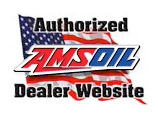18 Feb Amsoil Thoroughly Test its Products
Synthetic lubricants deliver better wear protection, engine cleanliness and fuel efficiency than conventional oils. proven that Amsoil synthetic motor oils form a more durable fluid film than conventional oils due to their resilient base oils and engineered additive packages, helping vehicles run better and longer.
Amsoil is proud being the first motor oil to pass API standards testing. The following organizations are responsible for ensuring the quality of lubricants meets the rigorous demands of vehicles, machinery and equipment.
- American Petroleum Institute (API)
- International Lubricant Specification Advisory committee (ILSAC)
- European Automobile Manufacturers Association (ACEA)
How Is Motor Oil Tested?
Since 1905, the Society of Automotive Engineers (SAE) has been developing and publishing standards for every aspect of motor vehicles, in addition to educating engineers to create safer, cleaner and more accessible mobility solutions.
The American Society for Testing and Materials (ASTM) is an international standards organization that develops and publishes technical standards for a wide range of materials, products, systems and services. SAE specifies which ASTM tests are needed to verify that a particular lubricant is suitable for a specific component or technology.
As mechanical technology advances, so do lubrication requirements. Meeting the specifications of these organizations means that a particular motor oil also meets the original equipment manufacturer (OEM) requirements. It’s important to review the owner manual to ensure the OEM has not placed additional requirements above industry-standard testing. Industry specifications provide the aftermarket opportunities to test their products on a level playing field and offer products that meet or exceed OEM quality performance.
Amsoil publishes data sheets with the results of testing.
ASTM D2270
This tests measures viscosity index or the variation in a motor oil’s kinematic viscosity between ambient and operating temperatures (40*C and 100*C). A higher viscosity index indicates decrease in viscosity as temperature increases, the oil maintains its structure as temperatures increase. ASTM D445 tests the actual viscosity at both 40*C ambient and 100*C operating temperatures.
ASTM D5481 HTHS
These standard measures viscosity under temperatures and pressures representative of engine operating conditions. Applying stress to the oil through pressures provide insight into viscometric properties that other viscosity testing cannot, because engine oil additives introduce characteristics that can alter flow.
ASTM D97 & ASTM D5293
Drivers want a motor oil that maintains viscosity in extreme hot and cold weather. ASTM D97 test the pour point, which identifies the lowest temperature at which the lubricant will continually flow. ASTM D5293 simulates the viscosity of engine oil in relation to cold-engine cranking. This ensures the oil remains fluid enough to start an engine at a prescribe temperature.
ASTM D4172 & ASTM D2896
The primary purpose of an oil is to reduce wear from metal-on-metal contact. ASTM D4172 (four-ball Wear Test) determines the relative wear preventing properties of lubricating oils in sliding contact under prescribed test conditions. ASTM D2896 (Total Base Number, TBN) measure the oils ability to neutralize acids. Lubricants with higher TBN are more effective at suspending wear-causing contaminants and reducing the corrosive of acids over time.
TBN is impacted by high temperatures and low quality, high sulfur fuel. Sulfur becomes sulfuric acid during combustion, which accelerates TBN depletion. Overheating causes oil oxidation, which increases acidity and causes TBN to drop. This presents more reasons to use premium Amsoil synthetic lubricants which are highly resistant to thermal oxidation and acidity.
Amsoil products meets or exceeds industry standards and is a great to protect your investment.

